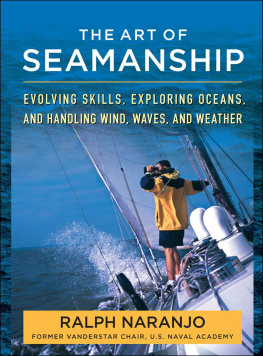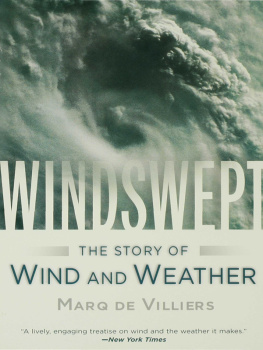
When Ian Proctor first penned this book in 1953 (then titled Sailing: Wind and Current) I was only just aware that there was more to racing success than simply sailing fast. Strategy and tactics were very much a veiled mystery and there were few sailors who were prepared to share their knowledge and skills.
The publication of this book, however, opened my eyes to a new aspect of small boat racing and whatever anyone else cares to tell you, small boat racing is the place to learn the finer points, because of the sensitivity and manoeuvrability that accentuates any move, be it good or bad. Ian was a highly proficient dinghy sailor who was also an innovator his lasting contribution to dinghy sailing for more than fifty years has been in the metal masts his company produced that gave the small boat world a baseline from which development in rigs and sails could be made.
Moreover, he was a skilled writer and his clarity is evident in this book. He also penned the original illustrations, and nothing could be clearer than these, redrawn in colour for this revised edition. Many have followed his lead, but none with the simplicity that leads to greater understanding of the vagaries of wind and current.
In no way is this book a primer; it is rather of benefit to those who have learned to sail, begun to race and find themselves back in the pack. It helps to predict alterations to the wind and currents, but leaves the hands-on techniques to the individual. This is ground-breaking material that paves the way for all-round improvement.
Sailing Strategy teaches the fundamentals of preparation the guaranteed path to improved performance and amply demonstrates how to accomplish this with a practical example; one that should be of particular interest to any Olympic aspirant.
Sailing should be fun, and there is no doubt that winning races is far more fun than losing them. The pathway to the podium is here, and that age-old adage applies: read, learn and inwardly digest. The information will make itself evident the more you sail, so have fun, but whatever you do, keep a log of it.
Bob Fisher
Lymington
A most experienced and successful dinghy helmsman, who has several times represented Britain in international sailing events, once said to me that he seldom went afloat without learning something new about the art of getting his boat along, or the ways of the wind or the water. There is always so much to be learnt in this sport of sailing and that is one of the things that makes its pleasures ever fresh.
The ability to understand the pattern of moving airstreams and currents in water is obviously of vital importance to everyone who wishes to win sailing races. It is perhaps less important to those who sail in a more leisurely fashion, but it may help to get those shrimps back in time to be cooked for supper, or it may even one day save a boat from being swept out to sea on a swiftly ebbing tide, or rescue a sweating mariner from hours of toil with a paddle in the sweltering heat of a windless summer day.
In nearly every area where boats sail, there are in certain circumstances little idiosyncrasies in the ways of the wind and the currents. Even the most experienced sailing man cannot forecast all these local peculiarities unless he has had precious experience of them. But usually the movements of the air and of the water follow fairly definite rules and assume a pattern, a full understanding of which may frequently enable an expert stranger to forecast with considerable accuracy what is happening and what is likely to happen in these two elements which are of so much interest to those who sail.
The main object of this book is to try to define these rules followed by moving streams of air and water, and to give examples of them.
In some cases, the causes of certain phenomena are obscure. It is always desirable to know the causes of any such phenomena, if possible, for only by doing so can they be properly understood and used to the greatest advantage. In these cases, suggested causes are given in this book without dogmatism, for perhaps if they are put in this way they will provide the reader with a basis for discussion with other sailing enthusiasts and will eventually be confirmed or others be discovered.
Trying to interpret and analyse the ways of the wind and current greatly adds to the interest of sailing among new surroundings. When it is found that the wind is doing what was expected of it, or the current is acting according to prophetic utterances, it is like meeting old friends in a foreign land. When they do not do what is expected of them, there is usually something to be learnt.
Hitherto, the study of the effect of waves on small boats especially on those of the light planing types seems to have been neglected by all but a few. There is much of interest to be learnt on this subject and I feel sure that important wave-sailing techniques will develop in the next few years as at present it seems to be one of the most promising of the relatively unexplored and unexploited tributaries to the art of small boat sailing. This book scratches at the surface of this intriguing matter and I hope that it will prompt deeper delving into the secrets of sailing on waves.
Wherever and whenever you sail, the pattern of the wind will affect your progress. For a great many, the same applies to the movement of the current in the water. Whether you sail a tubby little lugsail dinghy or a 12-metre, the whims of these two elements are the beneficiaries or impediments with which you must do business. It is almost a certainty that having once sampled this sport in one of its varied forms, you will not shake its interest from you until your aged creaking limbs forbid you to go afloat. And every time you do go afloat, youll be out there dealing with these two potential dictators the wind and the current. Every sailing man ought to learn how to handle them with diplomacy and to use them to his own advantage when they are in his favour and to minimise their opposition when they are working against him.
I know that they will not expect any such thanks, but I should like to express my appreciation to my many sailing friends for the help which has been given me for many years in discussions and exchange of views with them. In particular to Beecher Moore, with whom, as both crew and helmsman, I have had many interesting races and against whom, in the past, I have sailed many more. Bruce Banks, Michael Goffe, Charles Currey, Howard Williams and many other notable helmsmen have always been ready to unlock the door to their storehouses of experience and skill, and, more recently, I have found that there is much to be learnt from the fresh outlook of the younger 12-footer helmsmen of the Hamble River Sailing Club, especially Cliff Norbury, Dick Vine and John Oakeley.
I hope that this book will help its readers to sail better races or just sail better. But above all, I hope that it will help them to get more interest and enjoyment out of their sailing.
Ian Proctor
Before making major decisions, or going into battle, the ancient Greeks were accustomed to pay a visit to the oracle, there to consult their deities for advice or prophecy. The answers given were usually skilled examples of obscurity and ambiguity, for it did not pay the operators of the oracle to be wrong too often. The small boat sailor who wishes to consult his particular brand of oracle before entering into negotiations with the elements afloat, luckily has rather more reliable mediums to help and guide him.
Next page








